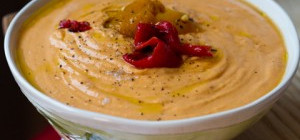 As the legal status of cannabis continues to evolve, cannabis-infused cuisine is emerging as an innovative and tantalizing way to enjoy the plant’s benefits. Transforming cannabis into delectable dishes goes beyond the ubiquitous pot brownies, offering a sophisticated and diverse range of flavors and experiences. This article will explore the world of cannabis-infused cuisine, learn techniques for incorporating cannabis into delicious recipes, and discover the benefits of cooking with this versatile plant.
As the legal status of cannabis continues to evolve, cannabis-infused cuisine is emerging as an innovative and tantalizing way to enjoy the plant’s benefits. Transforming cannabis into delectable dishes goes beyond the ubiquitous pot brownies, offering a sophisticated and diverse range of flavors and experiences. This article will explore the world of cannabis-infused cuisine, learn techniques for incorporating cannabis into delicious recipes, and discover the benefits of cooking with this versatile plant.
A Brief History of Cannabis in Food
Using cannabis in food is not a recent innovation. Historical records show that ancient cultures around the world, from China to the Middle East, used cannabis in cooking for both medicinal and recreational purposes. The plant served as a valuable source of nutrition and was often used in soups, teas, and pastes.
Understanding the Key Components: THC and CBD
Before diving into the culinary world of cannabis, it is essential to understand the two primary cannabinoids responsible for the plant’s effects: THC (tetrahydrocannabinol) and CBD (cannabidiol). THC is the psychoactive compound, which creates the “high” feeling, while CBD is non-psychoactive and offers various health benefits. When incorporating cannabis into recipes, it is crucial to consider the desired effects and maintain a balance of these two compounds.
Decarboxylation: Unlocking the Potency of Cannabis
The raw cannabis plant does not have active THC and CBD. To experience the effects, one must undergo the process of decarboxylation, which involves heating the plant to convert these compounds into their active forms. The most common method of decarboxylation is heating the cannabis in an oven at low temperatures for an extended period. Once decarboxylated, cannabis is ready to be integrated into a variety of dishes.
Cannabis-infused Oils and Butters: A Versatile Base
An essential technique for cannabis-infused cuisine is creating infused oils and butters, which are the building blocks for many recipes. The method involves simmering decarboxylated cannabis with butter or oil, allowing the THC and CBD to bind with the fats. Once cooled and strained, these infused bases are ready to be used in a wide range of sweet and savory dishes.
- Butter: Works well in baked goods and sauces, can be used as a substitute for regular butter in most recipes.
- Coconut oil: Perfect for those avoiding dairy, excellent in both sweet and savory dishes, and has a great shelf life.
- Olive oil: A healthier alternative, ideal for salad dressings and drizzling over finished dishes.
Dosage, Potency, and Responsibility
When cooking with cannabis, it is crucial to understand and manage the dosage correctly. Start with a small dose, between 2-5mg of THC per serving, and gradually increase as desired. The potency of a dish is dependent on the strength of the infused butter or oil used, which can vary depending on multiple factors, such as the strain of cannabis, the decarboxylation method, and the infusion process.
Benefits of Cannabis-infused Cuisine
Beyond the recreational and culinary enjoyment, cannabis-infused cuisine offers several benefits. For those using cannabis as a medicinal tool, it can provide an alternative method of consumption with more controlled and longer-lasting effects. Additionally, edibles are discreet and can be enjoyed in various settings without the social stigma or concerns regarding the smell associated with smoking methods.
Selecting the Right Ingredients
One important aspect of crafting cannabis culinary delights is selecting quality ingredients. As a fundamental component of your edible creations, it is crucial to choose high-quality cannabis strains with desired properties. Finding a reputable source for THCA flower wholesale can provide you with a reliable selection that meets your specific needs and requirements while ensuring the quality of your final dishes.
Creativity and Pairing Flavors
When it comes to designing cannabis-infused dishes, the sky is the limit. From appetizers to desserts to beverages, integrating cannabis into your culinary creations can elevate the dining experience. Experiment with pairing different strains with specific flavors in your dishes, enhancing both the taste and the synergy of the components. Look for complementary flavors that enhance the cannabis rather than masking it, and allow the aroma and subtleties of the chosen strain to shine through.
Trends in Cannabis-infused Dining
As cannabis culinary art continues to grow, trends are emerging that showcase the ingenuity and variety of cannabis-infused dishes. From gourmet dinners to cannabis cooking classes, this unique fusion of food and cannabis is attracting foodies and cannabis enthusiasts alike. New culinary techniques, such as sous vide and molecular gastronomy, are pushing the boundaries and add excitement to the cannabis food industry.
Conclusion
The world of cannabis-infused cuisine is an exciting culinary frontier filled with delicious possibilities. With a basic understanding of the plant’s components, decarboxylation, infusion techniques, proper dosing, and recent trends, even amateur chefs can create tantalizing cannabis-infused dishes. From sweet treats to savory masterpieces, cooking with cannabis allows individuals to enjoy the benefits of the plant in an elevated dining experience.







